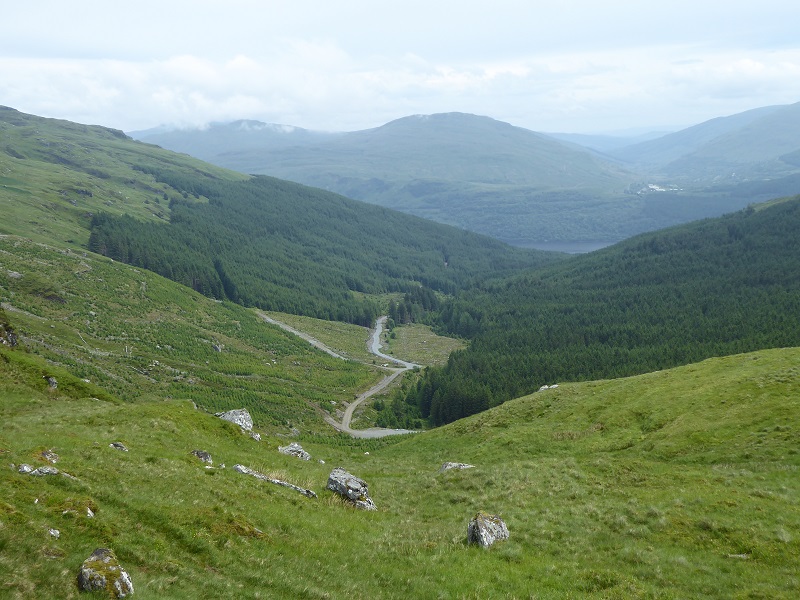
Back in March, hillwalker Rod McLeod, wrote an excellent report (see here) on Walk Highland about new track work he came across in Coilessan Glen, west of Loch Long, in the Loch Lomond and Trossachs National Park. The glen is an important recreational route, being taken by the Cowal Way, and has recently become even more popular since Cnoc an Coinnich, the hill south of the Brack, was promoted to Corbett status.
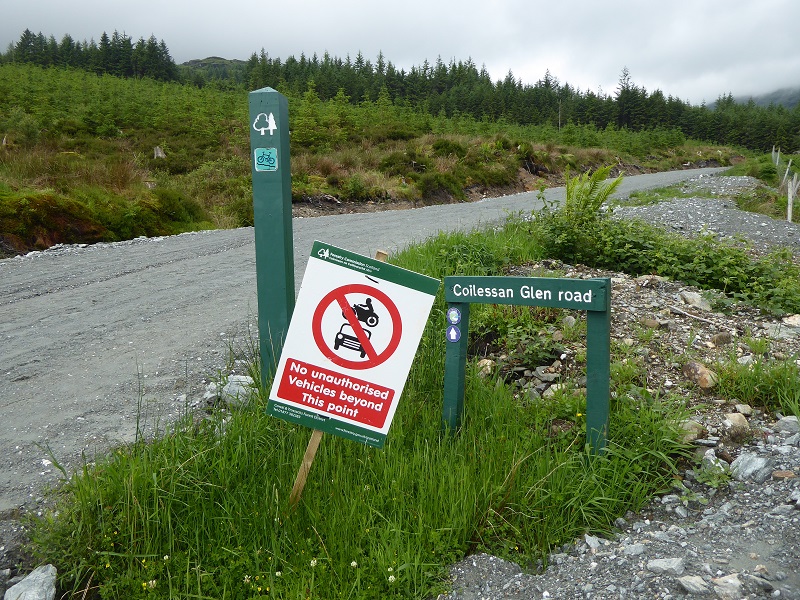
Forestry Commission Scotland owns the land and also promote a cycle ride here:
Ardgartan shore and Coilessan Glen
![]() Cycling – 6.9 miles / 11.0 km
Cycling – 6.9 miles / 11.0 km
Forest rides, loch shore and a fun descent back to the start.
Start by following the trail south towards the farm at Coilessan and round by the loch shore – you might just glimpse otters here. Then it’s a climb through red and roe deer’s territory in the shadow of Cnoc Coinnich before heading back down Coilessan Glen. Take a breather on the way to admire the view over Loch Long towards the Clyde!”
You might think therefore FCS would have an interest in improving the landscape and amenity in the area. The Argyll Forest Park is the oldest in Britain, created in 1935 and in its blurb the FCS exhort people to “Discover this beautiful, tree-cloaked corner of Scotland to walk, ride and relax in Britain’s oldest forest park.”
.

Instead FCS has upgraded part of the existing track network in Coilessan Glen by dumping aggregate on the earlier track. There is no planning application on the Loch Lomond and National Park Planning portal and the LINK Hill track group (see here) was not aware of the track through the prior notification system. While its possible the LINK hill track group missed the notification, its also possible that because this was an “upgrade” to an existing track the Loch Lomond and Trossachs National Park Authority did not have to be notified (I will try and find out).
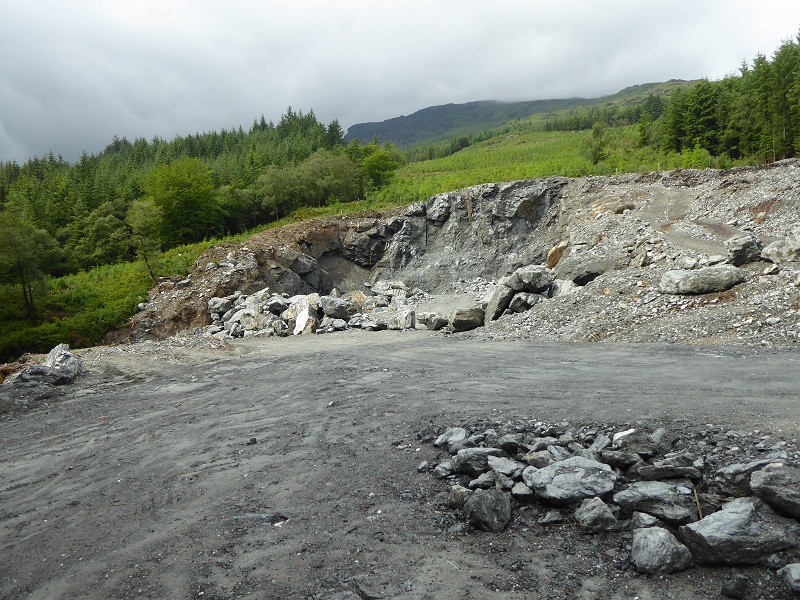
A sizeable new quarry has been created to source the new material for the track (the boulders in the middle ground are large) and gives some idea of how much aggregrate has been dumped on top of the existing tracks. In my view this should have required planning permission in the National Park.
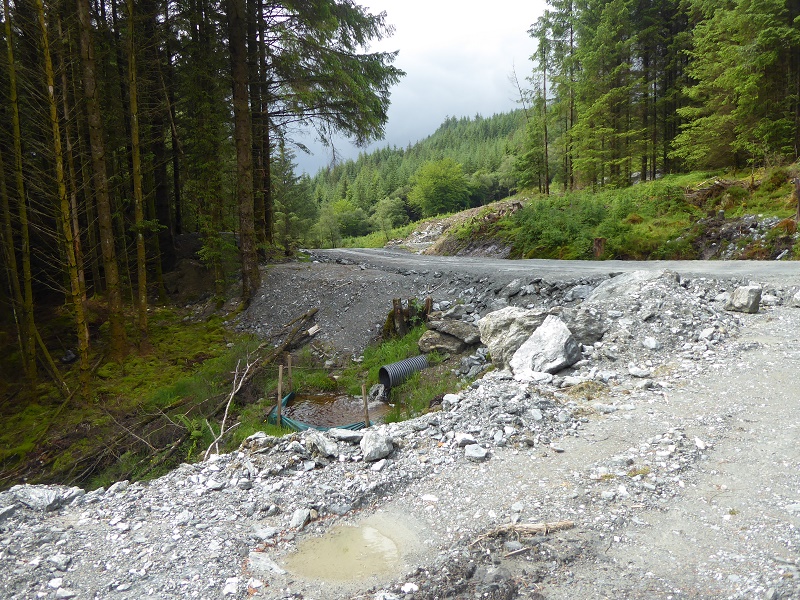
The quality of the finishing – there was no evidence that machines are still on site or that the work is not regarded as complete – is extremely poor. It might be more accurate to say non-existent in places. Its does not appear likely that the FCS will try and extract trees up this corner so what is the argument for leaving it like this, apart from cost? This should not be acceptable in a National Park, whatever the commercial imperatives to extract timber.
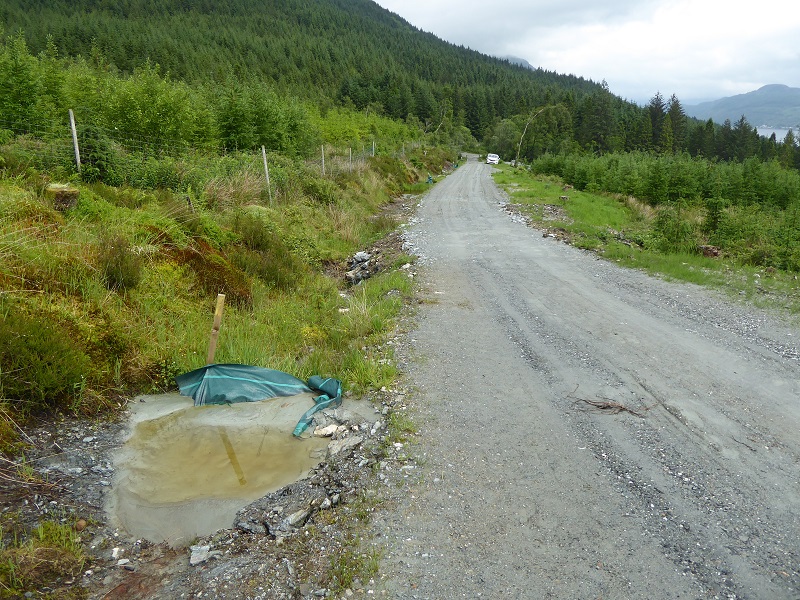
The Dukes Path has been spared the upgrading work so far and gives an idea of what the tracks looked like previously. The silt trap is to catch the silt that is being washed down from the new track just above. The crushed schist forms a very fine material which is likely to continue to wash out of the new track surface for some time.

The lack of care for the landscape at the micro level is demonstrated not just by the abandoned pipe and decapitated cone but by the spoil heap at the side of the “new” track. The lack of care at the landscape level is demonstrated by the conifer replanting either side of the Dukes Path. This was one of the few sections of the Dukes Path where the walker is not hemmed in by forest on either side but but instead of using the felling as an opportunity to create a more diverse landscape, the replanting will have obscured the view completely in another 20 years.
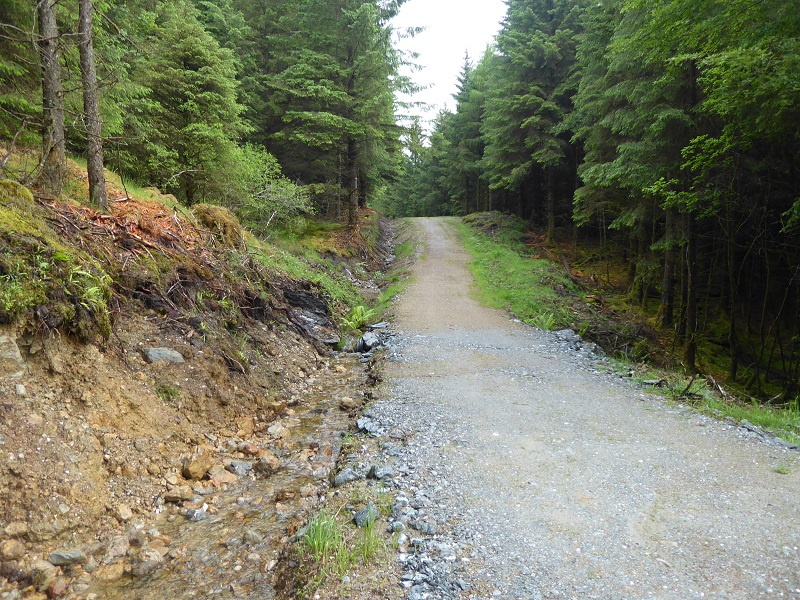
This photo also illustrates difference between repairing a track surface compared to the upgrading work at Coilessan (below). The bare bank on left appears to date from original construction.
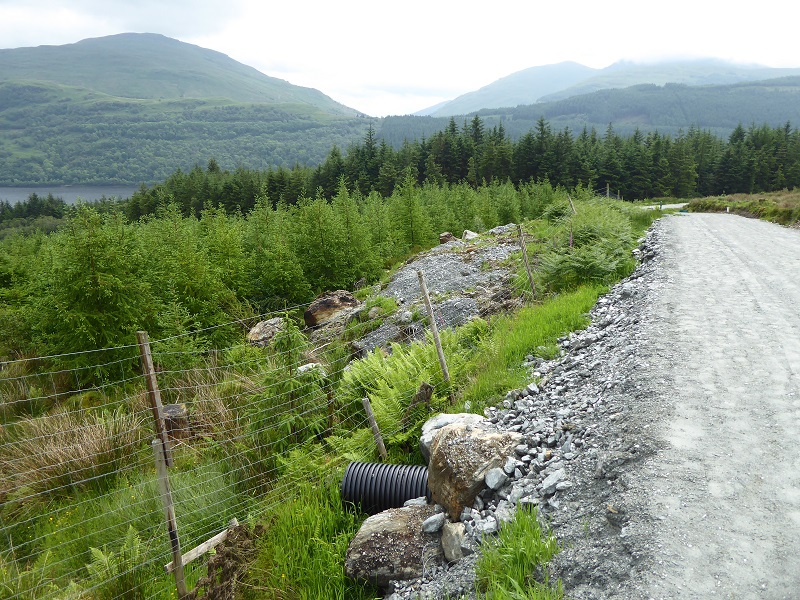
The history of a lack of care here is also demonstrated by the spoil to the left of the new track which has partly revegetated. It may date from earlier tree felling. Material from the new track will erode down the hillside.

The surface of the track is now firmer than two months ago, when Rod McLeod took his photos, and appears to have consolidated to an extent. I passed the Duke of Edinburgh Group shortly after taking this photo and asked them to rate the track and the walking experience. “Terrible” was the response.
 Is this the way we would be treating what was a fine section of burn?
Is this the way we would be treating what was a fine section of burn?
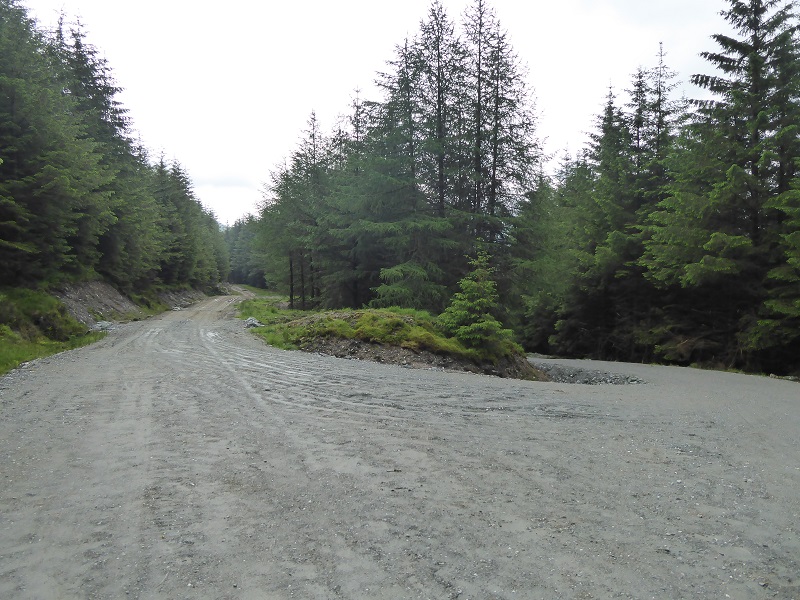 Compare the size of the former track on left with the upgraded one. Are bends this size really necessary?
Compare the size of the former track on left with the upgraded one. Are bends this size really necessary?
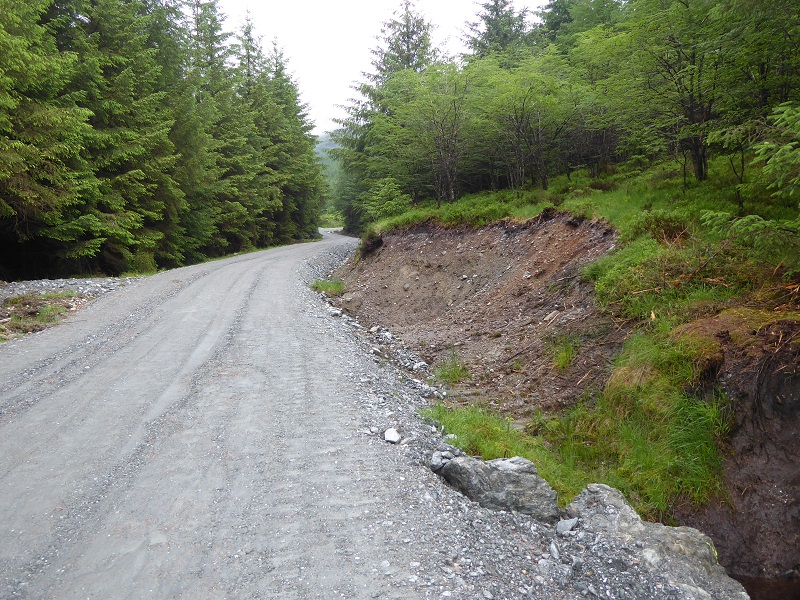
In order to widen the track, further excavation of banks and ditches has been undertaken in places. The vegetated area bottom right represents former bank, a section behind appears to have been scraped bank behind that vegetated. I could see not evidence that any attempt had been made to store and replace turf over excavated areas, even in places such as this where there are native trees behind which one would hope will be left in place during the felling. The LLTNPA rightly requires vegetation to be restored in hydro track construction – even if it does not happen much of the time – and similar standards should be applied to forest track construction.
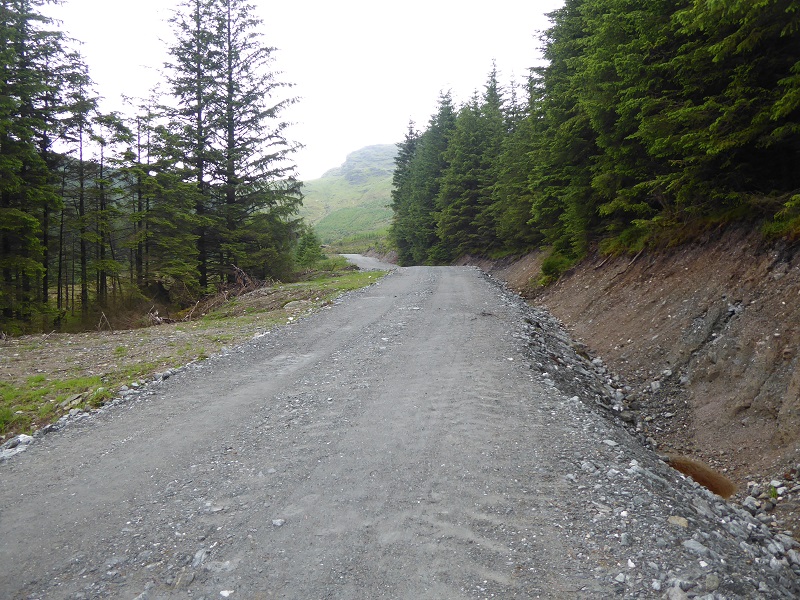
Will FCS do anything to improve this once the trees are extracted?
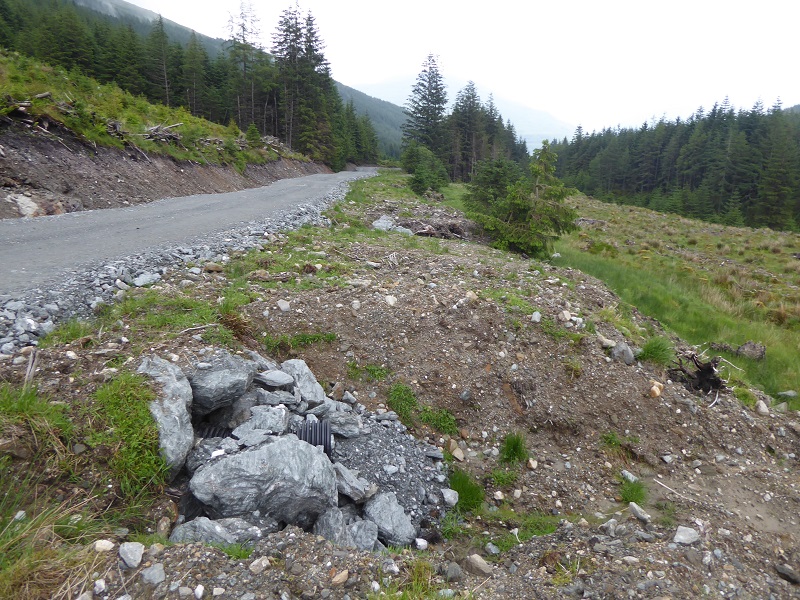
They have done very little to improve this section where felling is complete and indeed appears to have pre-dated the track. So, if the new track was not need for felling (top left) why is it needed now? Forest tracks have become larger and larger to accommodate bigger, heavier vehicles – just as in hydro track construction. The bigger the machines we use to work in the countryside, the bigger the tracks and the impact on landscape.
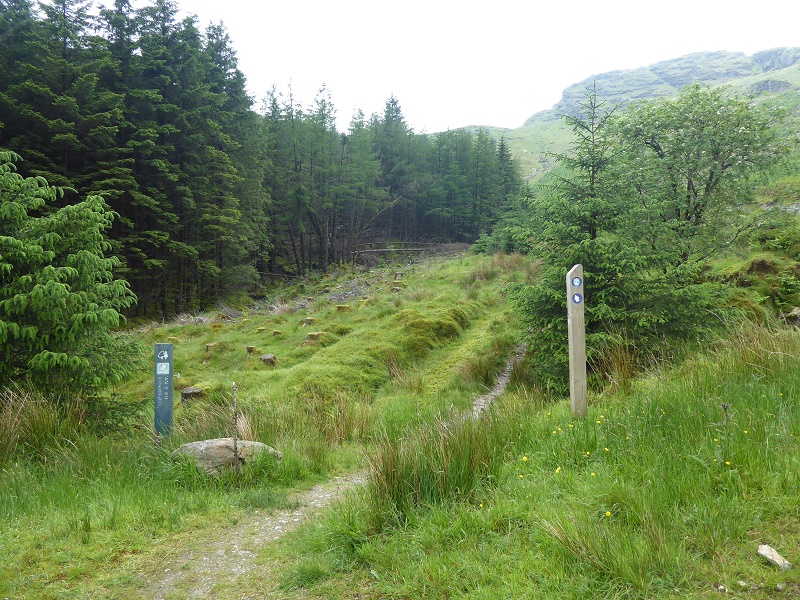
The contrast between the footpath construction in the upper part of the Glen and the track are quite stark. How can the FCS apply such difference standards? My 1980 1:50,000 map shows just a footpath, no track, up the Glen but now there is only a path in the upper part. A relief.
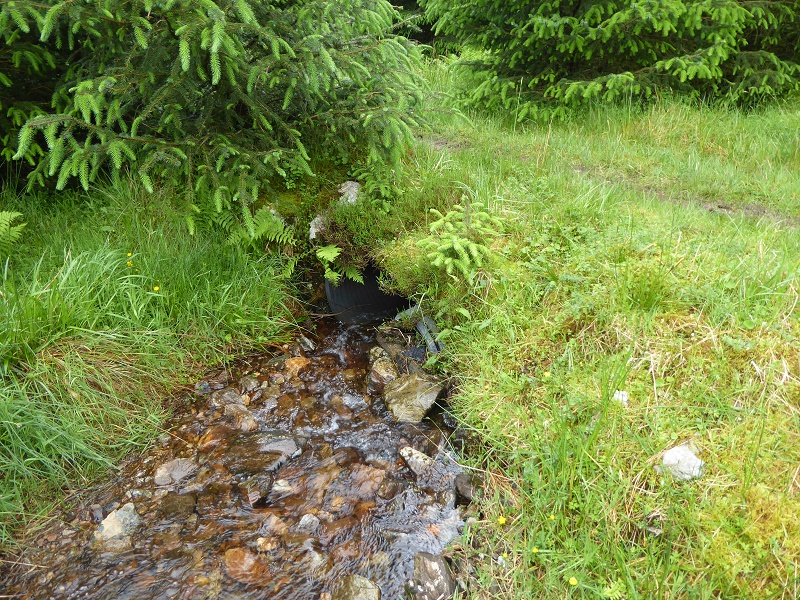 You can hardly see this plastic culvert under the path.
You can hardly see this plastic culvert under the path.
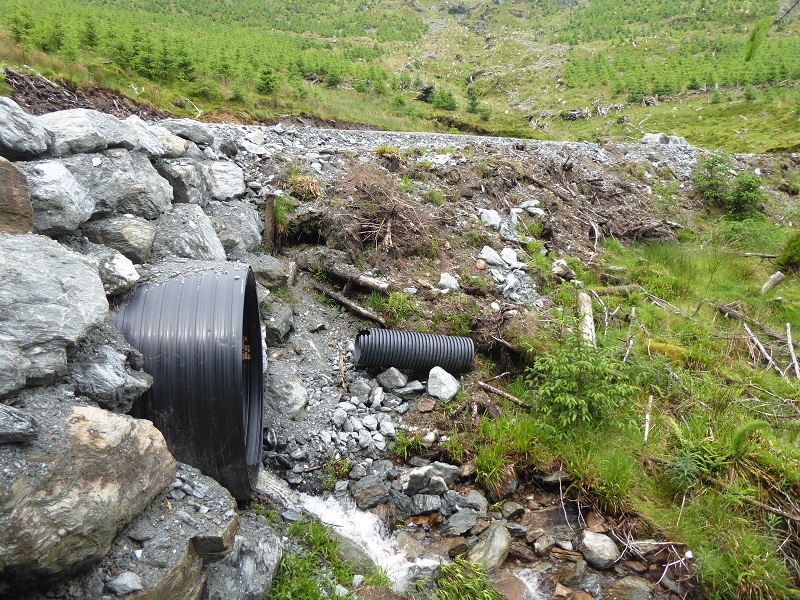
The care taken with the path contrast with the final section of the new track which finishes not far above.
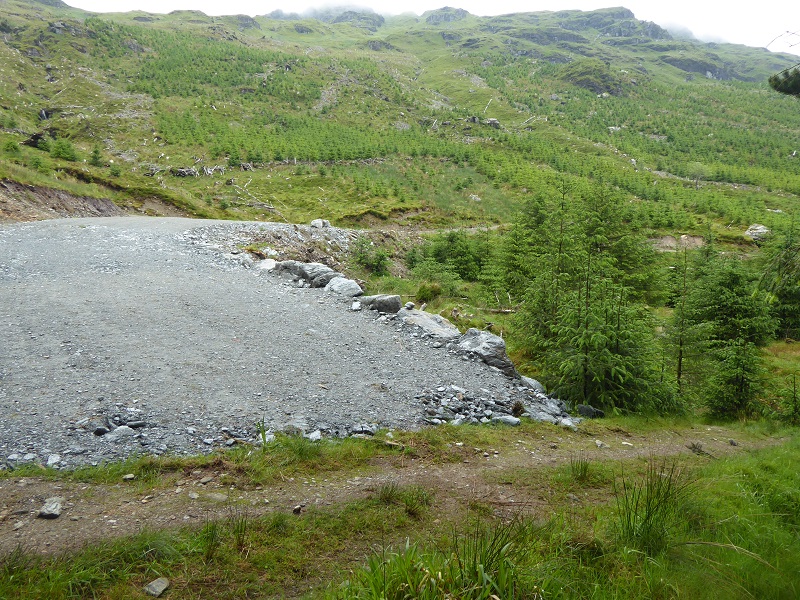
The felling and replanting in background (slopes of Brack) all took place without this track “upgrade” demonstrating that there was no need for works of anything like the extent of those that have been undertaken.
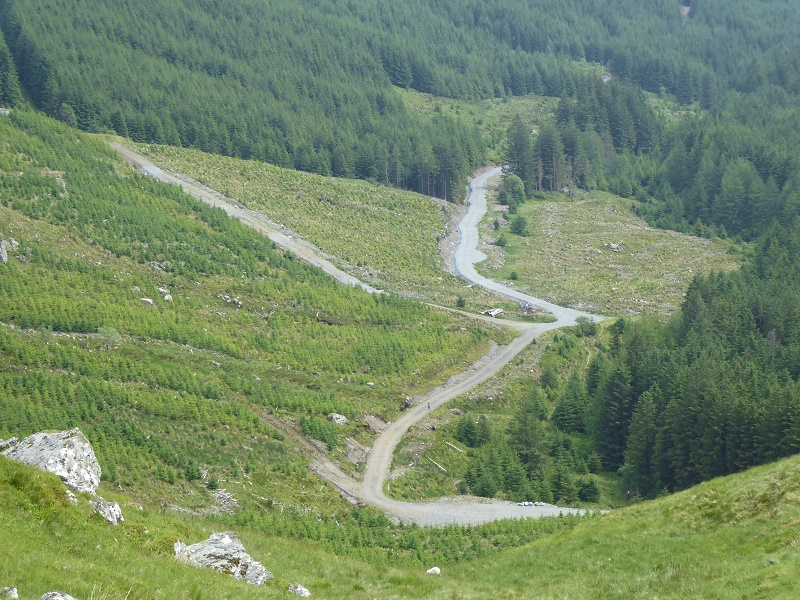
How does this compare with the FCS blurb: “Ardgartan (meaning the High Garden in Gaelic) is at the heart of an area of vast natural beauty. The forest of Sitka and Norway spruce is an ideal habitat for red squirrel, roe deer, buzzards and owls. Mixed woodland along the many small rivers and burns is home to otters, kingfishers and bats.”
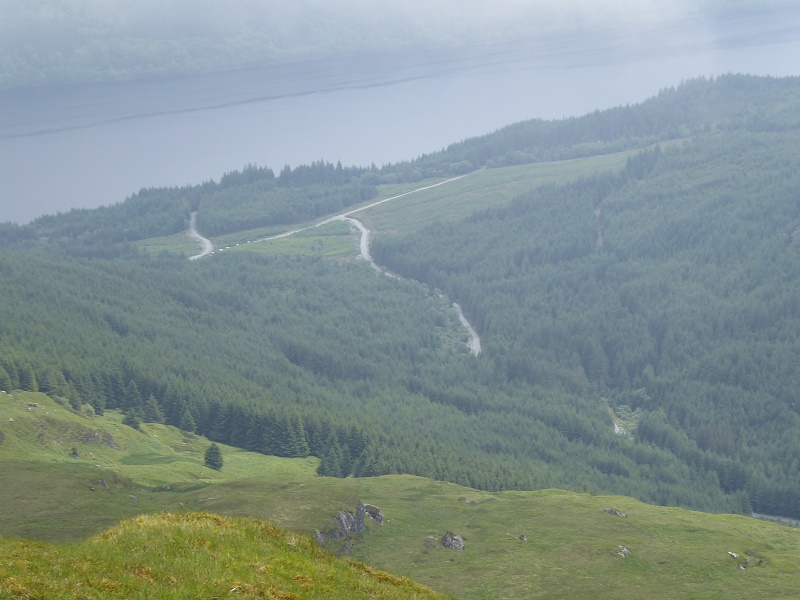
Even in the dense part of the forest, the upgraded track is visible from afar.
What needs to happen
The FCS needs to apply consistent standards of practice and up its game in our National Parks. In places, such as on east Loch Lomond, its doing some fantastic work to remedy past mistakes, in others, like here, it appears nothing has changed.
The LLTNPA meantime needs to start focussing on stopping any further destruction of landscape quality in the National Park through track construction, whether hydro schemes or forestry. In my view landscape protection and enhancement should be the number one priority in the new National Park partnership plan – instead of visitor management. Its not visitors that are destroying the landscape – their impacts are temporary – but how the land is managed. If the LLTNPA does not act, the very reason why people visit the National Park will disappear.
The LLTNPA and FCS need to start working together on these issues and start engaging the public about the quality of the “visitor experience” in conifer forests and how this might be improved.
